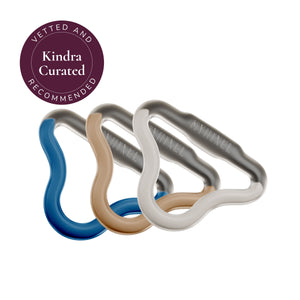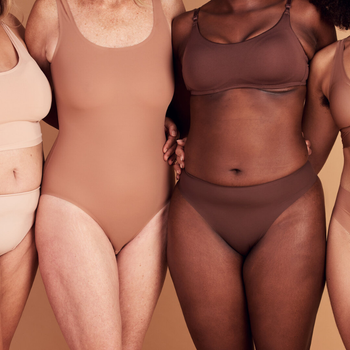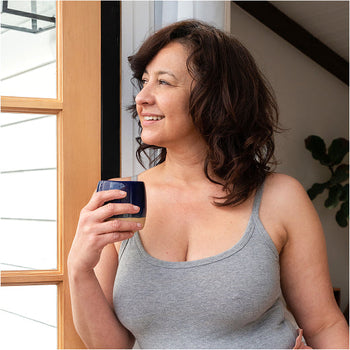It was not until the onset of perimenopause that a medical practitioner mentioned a bone density test to me. Why would I be worried about my bones? Old people fall down and break bones. Children break bones in play. And sometimes in car accidents, victims end up with broken bones. But at 46 I did not draw a connection between my decreasing levels of estrogen, a loss of bone mass and menopause.
It is only as I write now that I am drawing this line between the loss of hormones in the perimenopausal years that can lead to bone loss, also known as osteopenia, and for some, osteoporosis or thin bones.
What is Osteoporosis?
The World Health Organization defines osteoporosis as a condition in which bone mineral density is below -2.5 SD, osteopenia in which bone mineral density is between -1 to -2.5 SD, while normal is when bone mineral density is above -1 SD. These are the results that guide a physician’s recommendation.
Even today the definition does not mean much to me. But at least, I would have had something for comparison had I not been sleepwalking through menopause.
Some people have a genetic predisposition to osteoporosis. If you happen to know this, you can take precautions and get ahead of the disease. There are no symptoms that signal osteoporosis has begun. So if osteoporosis is not treated, it’s reasonable to expect a decrease in bone density in your hips, spines and/or wrists as your hormone storage decreases. Once you have been diagnosed, your choices are medication and weight-bearing exercise to build more bone.
The research is a bit complicated about which combination of food and supplements are best. But at least, there is evidence that these corrective suggestions of food and supplements have proven to be helpful.
Who Suffers From Osteoporosis?
One in two women over age 50 will have an osteoporosis-related fracture in her lifetime. Worldwide, one in three women over age 50 will experience osteoporotic fractures.
Many of my friends in their 50s and 60s are experiencing bone and joint concerns, including replacements. This makes me ask myself what does bone loss have to do with this bone and joint pain. And because I do not have a clue, I Googled to find that osteoporosis is estimated to affect 200 million women worldwide - approximately one-tenth of women aged 60, one-fifth of women aged 70, two-fifths of women aged 80 and two-thirds of women aged 90.
Like many others, I never questioned my doctor when she sent me for a bone density scan. The results suggested I was borderline osteopenia and I was given a prescription. Once I got the prescription I began to focus. I was hesitant to take it because at the time, there was not much research on the long term effects of the drug. Over the past several years more drugs to treat osteoporosis have come on the market, including one to stimulate new bone formation.

Treatment: Drugs, Exercise, or Food
I opted for exercise and diet. I figured the longer I put off taking any drug, the better it would be for me in my later years when I could no longer exercise. I realize this is not necessarily logical. But I consciously stepped up my weight-bearing exercises which included walking briskly and climbing stairs. Step aerobics were the rage and my visits to the gym included step aerobics. I now cycle, play tennis, and garden. I also focused on eating foods rich in calcium along with green leafy vegetables.
My bottom line remains that weight bearing exercise builds bones. So my suggestion is rather than not exercise for fear of breaking something, what has proven more helpful in improving my balance, coordination and flexibility is simply to exercise regularly. Of course everyone should talk to their doctor before starting a new regimen.
Here is a list of preventive steps I explored to help me avoid and lessen osteoporosis and resulting fractures:
- Eat a balanced diet high in fruits, vegetables, calcium, and vitamins.
- Get enough Calcium. The recommended total intake of is 1,200 mg daily; for best absorption, if taking supplements, divide doses into 250-500 mg doses throughout the day. Of the two types of calcium, calcium carbonate is best absorbed when taken with food but calcium citrate can be taken on an empty stomach.
- Get enough Vitamin D. NAMS and the National Osteoporosis Foundation recommend at least 800-1,000 IU per day for women age 50 and over who are at risk of vitamin D deficiency. Vitamin D deficiency can be caused by inadequate sun exposure (for example, those who live in northern latitudes).
- Avoid alcohol and smoking. Heavy alcohol intake (more than 7 drinks per week) increases the risk of falls and hip fracture and women smokers tend to lose bone more rapidly and have lower bone mass than nonsmokers. Stopping smoking is one of the most important changes women can make to improve their health and decrease risk for disease.
- Be physically active every day. Weight-bearing exercise (for example, fast walking, hiking, jogging, and weight training) may strengthen bones or slow the rate of bone loss that comes with aging. Balancing and muscle-strengthening exercises can reduce the risk of falling and fracture.
- Consider therapeutic medications. Currently, several types of effective drugs are available. Healthcare providers can recommend the type most appropriate for each woman.
- Eliminate environmental factors that may contribute to accidents. Falls cause nearly 90% of all osteoporotic fractures, so reducing this risk is an important bone-health strategy. Measures include ample lighting, removing obstructions to walking, using non-skid rugs on floors, and placing mats and/or grab bars in showers.
- Be aware of medication side effects. Some common medicines make bones weaker. These include a type of steroid drug called glucocorticoids used for arthritis and asthma, some anti-seizure drugs, certain sleeping pills, treatments for endometriosis, and some cancer drugs. An overactive thyroid gland or using too much thyroid hormone for an under-active thyroid can also be a problem. If you are taking these medicines, talk to your doctor about what you can do to help protect your bones.
Remember being big or small boned has nothing to do with osteoporosis. This is truly an instance where you cannot judge a book by its cover. Without a bone density scan you cannot learn exactly what is going on inside your body.
NOTICE: KINDRA DOES NOT PROVIDE MEDICAL OR HEALTH CARE ADVICE. OUR EMPLOYEES AND OTHER REPRESENTATIVES ARE NOT PHYSICIANS OR HEALTH CARE CLINICIANS. YOU SHOULD CONSULT YOUR PERSONAL PHYSICIAN FOR ANY MEDICAL AND/OR OTHER HEALTH CARE ADVICE BEFORE ACTING ON ANY INFORMATION PROVIDED BY KINDRA OR ANY OTHER SOURCE.
Continue the Conversation
Leave a Reply
Tags: About Menopause balanced diet body Calcium Healthy diet Managing my Hormones Mental Well-Being Osteoporosis Physical Well-Being Vitamin D














Wonderful tips on helping to prevent osteoporosis, Patricia. At 54, I haven’t yet had a bone density test. But I do worry about my bones, and make sure to take calcium supplements and get lots of sun (nature’s Vitamin D source!). Thanks for the great info.
— Valerie Albarda
Thank you, Valerie, for taking the time to read this. My recommendation is to take the test. It’s really pretty non-plussed as far as tests go. It’s not invasive at all is what I mean. For what you can learn, I think it’s worth it.
— PATRICIA A. PATTON
Wow, it really stood out to me when you pointed out that one in two women over age 50 will have a fracture that is related to osteoporosis. It seems like it would be a good idea to have your bone density tested regularly if you are over the age of 50. That way you can prevent fractures from occurring as much as possible.
— PATRICIA A. PATTON
I’m glad that you talked about the importance of assessing your bones to protect them by having prevention. My wife told me that she wants to undergo a test that will identify if she has osteoporosis, and asked I have any idea what is the best option to do. Thanks to this helpful article, I’ll be sure to tell her that we can consult a trusted bone density testing service as they can provide proper testing. https://milledgevilleobgyn.net/bone_health.html
— John Carston